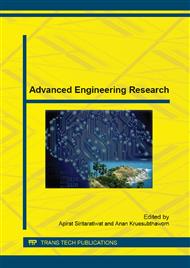p.180
p.184
p.189
p.195
p.199
p.203
p.207
p.211
p.215
Study the Effect of Stripe Height and Read Track Width on Blocking Temperature
Abstract:
The magnetic read head technology is continuously designed to become smaller in order to get the highest areal density. Due to small volume the thermal stability is investigate for this study. The objective of this research is to study the relationship between the dimension of read head sensor and its blocking temperature. Stripe Height and Read track width were considered for this study. The result is blocking temperature decreasing with short stripe height. Advantage of this study is the reliability issue especially blocking temperature was captured by using resistance.
Info:
Periodical:
Pages:
199-202
Citation:
Online since:
August 2015
Authors:
Keywords:
Price:
Сopyright:
© 2015 Trans Tech Publications Ltd. All Rights Reserved
Share:
Citation:


